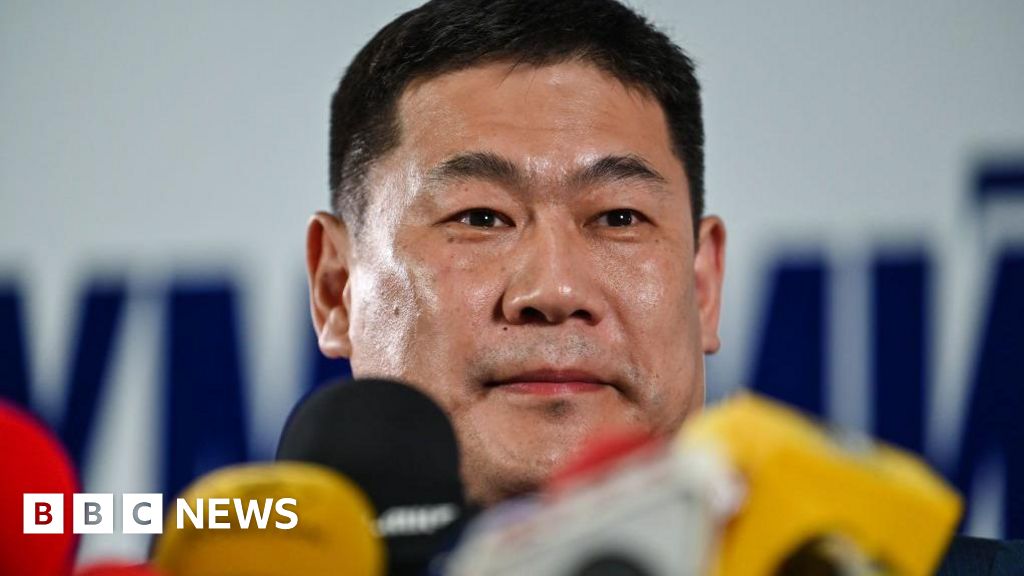ARTICLE AD BOX
Several governors have moved to hire federal workers fired by the Trump administration for open state jobs, tapping a growing labor pool of unemployed bureaucrats.
Democratic Govs. Kathy Hochul of New York, Josh Shapiro of Pennsylvania, Wes Moore of Maryland, Josh Green of Hawaii and Michelle Lujan Grisham of New Mexico have couched their pitches to laid-off federal workers in criticism of President Trump’s quest to reduce the size and scope of government.
Conversely, Virginia Gov. Glen Youngkin, a Republican, launched the Virginia Has Jobs website last month without mentioning the Trump administration. In a statement this week, a Youngkin spokesperson touted 250,000 private and public sector job openings in his state as “immense opportunities.”
“Democratic governors are working hard to protect the residents of their states from the worst of Donald Trump and Elon Musk’s chaos and dysfunction — recruiting laid-off workers to fill critical job openings to provide essential services, and standing up to efforts to gut public schools and deny people health care and retirement benefits,” Izzi Levy, a spokesperson for the Democratic Governors Association, told The Washington Times.
Rick Manning, president of the Fairfax-based Americans for Limited Government, said Mr. Yougkin’s position reflects Virginia’s “unique challenges” bordering the nation’s capital.
“The Commonwealth of Virginia is in direct competition with the federal government for people who would choose the civil service route for a career,” said Mr. Manning, a former official in the George W. Bush Labor Department who was on Mr. Trump’s transition team for that agency. “Federal layoffs may be viewed by Governor Youngkin as a way to fill a talent gap.”
Federal downsizing has been especially threatening to the District, where Democratic Mayor Muriel Bowser has launched an effort to hire laid-off bureaucrats, and to suburban Maryland and Virginia.
Maryland has 160,000 federal civilian jobs — roughly 6% of the state’s workforce — and counted another 225,000 jobs directly supported by federal contract dollars in 2023.
“Maryland is uniquely impacted by the Trump-Vance administration’s moves to fire federal workers,” a spokesman for Mr. Moore said in an email.
Mr. Moore has estimated that up to 10,000 Marylanders could lose their jobs in the federal downsizing. He recently launched a resource website to help state residents impacted by layoffs and funding cuts to apply for more than 5,000 open state government jobs.
As of Wednesday, officials said roughly 84,500 people had visited the website to access its resources on unemployment insurance, job searches, career support and legal aid.
Mr. Trump’s Department of Government Efficiency has offered contract buyouts, implemented mass layoffs and threatened to fire employees who don’t justify their work.
Roughly 75,000 government workers accepted buyouts in the weeks after Mr. Trump returned to office on Jan. 20. As of Feb. 25, global data tracker Statista said another 16,000 federal workers had been fired.
The number of unemployed federal bureaucrats continues to grow.
The Education Department, which Mr. Trump wants to eliminate, announced Tuesday that it would slim down to 2,183 employees after firing about 1,400 people and confirming buyouts from roughly 600 others.
That’s down almost 50% from 4,133 employees on Inauguration Day.
Angeli Gianchandani, a marketing instructor at New York University, said states have responded with “strategic marketing” to hire people for agency jobs they long struggled to fill.
While New York and California pay state workers more than the federal government, she noted that federal workers nationwide earn an average of $106,000 annually, compared with $80,829 for state workers.
“This is a master class in employer branding,” Ms. Gianchandani said. “States are repositioning themselves as desirable workplaces by marketing stability, mission-driven work, and leadership opportunities to experienced federal employees. It’s a smart move.”
In blue states, the marketing initiatives have involved taking potshots at the president.
“The federal government might say, ’You’re fired,’ but here in New York, we say, ’You’re hired,’” Ms. Hochul said of her state’s new hiring pitch, mocking Mr. Trump’s famed catchphrase for firing people.
In a March 5 post on X, Maryland’s governor criticized the Trump administration’s plan to cut more than 80,000 employees from the Department of Veterans Affairs.
“America’s veterans deserve better,” Mr. Moore posted. “The White House should be standing with them, not treating them as if they’re expendable.”
Other Democratic governors have launched similar appeals. According to a new employment website targeting federal employees, Pennsylvania has 5,600 openings for essential jobs from accountants to registered nurses.
New Mexico has launched statewide recruitment events, training programs and a resource website.
Meanwhile, Hawaii’s Operation Hire Hawai’i has sought to fast-track former federal workers into state agencies.
Despite the rhetoric of Democratic governors, economists say financial needs have likely motivated the campaigns more than a desire to hurt Mr. Trump.
They noted that blue states tend to run higher budget deficits and benefit more from filling open agency jobs than paying unemployment to career bureaucrats with few marketable private sector skills.
“Many of these laid-off federal workers may have self-selected into government service based on self-assessment of their psychological, economic, and other preferences, and also acquired requisite skills,” said Siri Terjesen, an economist and associate dean at public Florida Atlantic University. “The combination suggests that these individuals may be both more effective and also happier continuing in government positions, albeit at the state level.”
As the Trump administration continues layoffs and slashes federal spending on grants, analysts predict dwindling state budgets will also force unemployed bureaucrats to compete for jobs in the private sector.
In Florida, where there are currently 1,409 state-level job openings, Republican Gov. Ron DeSantis signed an executive order last month that directs every state agency to establish a “DOGE Team … to identify and eliminate unnecessary spending.”
In California, which led the nation last year with 253,600 federal workers, Democratic Gov. Gavin Newsom has made no effort to sell state jobs to workers facing layoffs.
Lance Izumi, a past president of the Board of Governors of the California Community Colleges under Republican former Gov. Arnold Schwarzenegger, said the state’s budget crisis and looming cuts to federal education funding make payroll expansions unlikely.
“California cannot afford to hire thousands of laid-off federal bureaucrats,” said Mr. Izumi, an analyst at the free-market Pacific Research Institute. “The independent State Legislative Analyst’s Office has estimated that California is facing years of budget deficits in the double-digit billions of dollars.”
It remains unclear whether other governors with unfilled state agency jobs will try to hire laid-off federal workers.
According to an analysis from the conservative American Legislative Exchange Council, a network of state lawmakers that launched a Government Efficiency Coalition to coordinate with DOGE on initiatives to reduce government waste, Nevada has the most local and state full-time employees per 10,000 residents nationwide.
Arizona, Florida, Pennsylvania and Michigan round out the top five.
Economist Jonathan Williams, ALEC’s president, said red state DOGE initiatives are likely to eliminate rather than fill many open agency positions as they work to “eliminate waste and provide taxpayer savings.”
“One recommendation for budget savings is to eliminate positions that have been vacant for more than six months,” Mr. Williams said. “Many times state agencies keep these positions on the books simply to avoid losing the budget line item.”

 4 months ago
84
4 months ago
84








 English (US) ·
English (US) ·